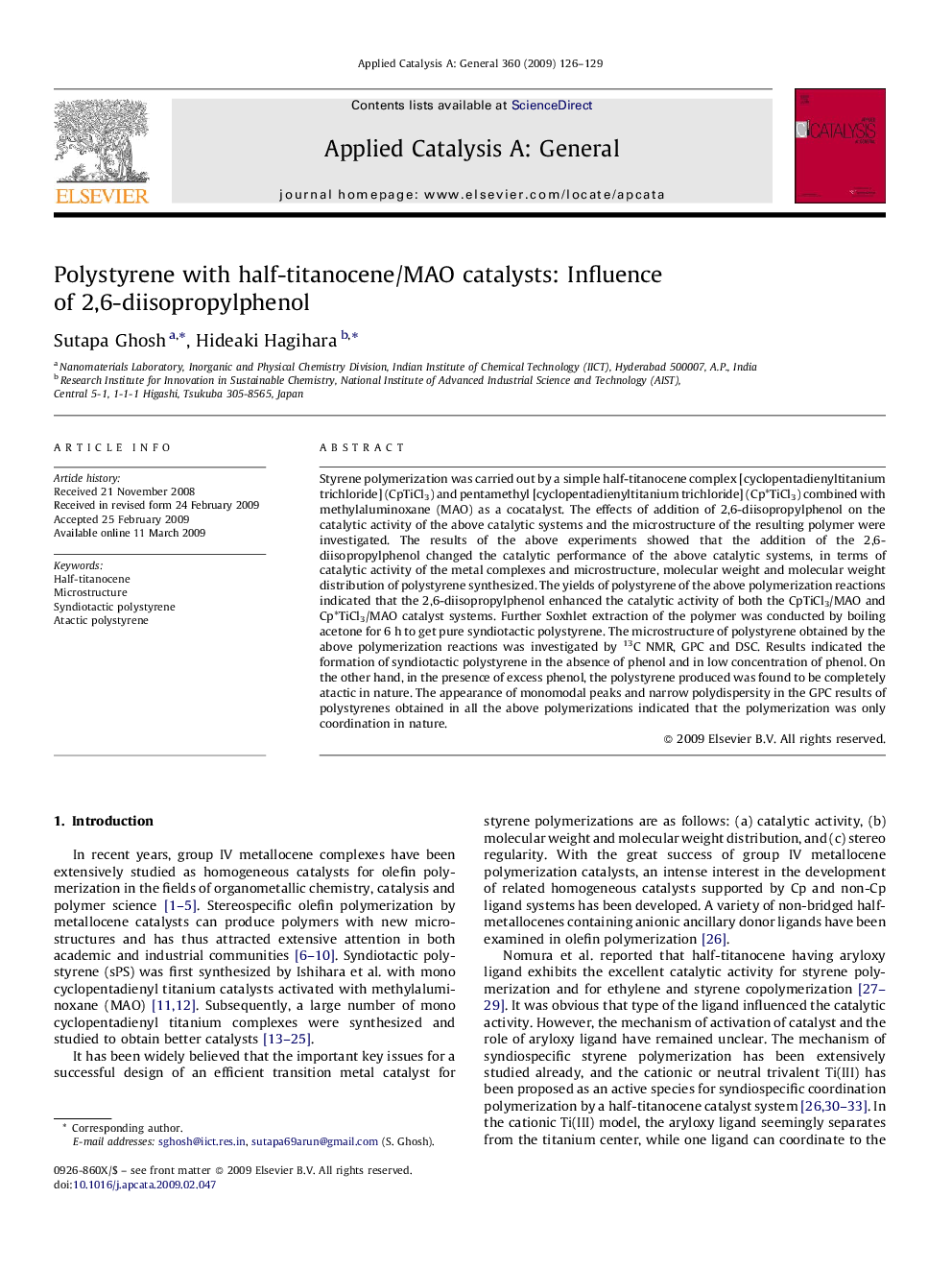| Article ID | Journal | Published Year | Pages | File Type |
|---|---|---|---|---|
| 42960 | Applied Catalysis A: General | 2009 | 4 Pages |
Styrene polymerization was carried out by a simple half-titanocene complex [cyclopentadienyltitanium trichloride] (CpTiCl3) and pentamethyl [cyclopentadienyltitanium trichloride] (Cp*TiCl3) combined with methylaluminoxane (MAO) as a cocatalyst. The effects of addition of 2,6-diisopropylphenol on the catalytic activity of the above catalytic systems and the microstructure of the resulting polymer were investigated. The results of the above experiments showed that the addition of the 2,6-diisopropylphenol changed the catalytic performance of the above catalytic systems, in terms of catalytic activity of the metal complexes and microstructure, molecular weight and molecular weight distribution of polystyrene synthesized. The yields of polystyrene of the above polymerization reactions indicated that the 2,6-diisopropylphenol enhanced the catalytic activity of both the CpTiCl3/MAO and Cp*TiCl3/MAO catalyst systems. Further Soxhlet extraction of the polymer was conducted by boiling acetone for 6 h to get pure syndiotactic polystyrene. The microstructure of polystyrene obtained by the above polymerization reactions was investigated by 13C NMR, GPC and DSC. Results indicated the formation of syndiotactic polystyrene in the absence of phenol and in low concentration of phenol. On the other hand, in the presence of excess phenol, the polystyrene produced was found to be completely atactic in nature. The appearance of monomodal peaks and narrow polydispersity in the GPC results of polystyrenes obtained in all the above polymerizations indicated that the polymerization was only coordination in nature.
Graphical abstractStyrene polymerization was carried out using half-titanocene complexes CpTiCl3 and Cp*TiCl3 combined with methylaluminoxane as a cocatalyst. The effects of addition of 2,6-diisopropylphenol derivatives on the catalytic activity and the microstructure of this polymer were investigated by characterizations of the polymer by 13C NMR, GPC and DSC.Figure optionsDownload full-size imageDownload as PowerPoint slide
